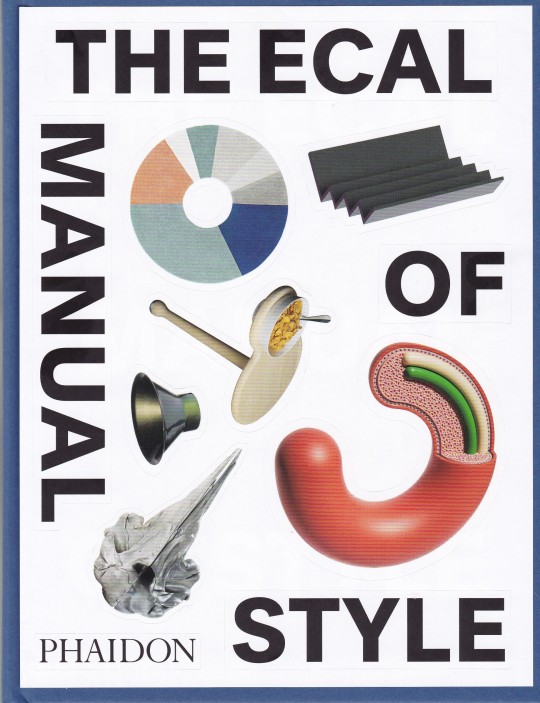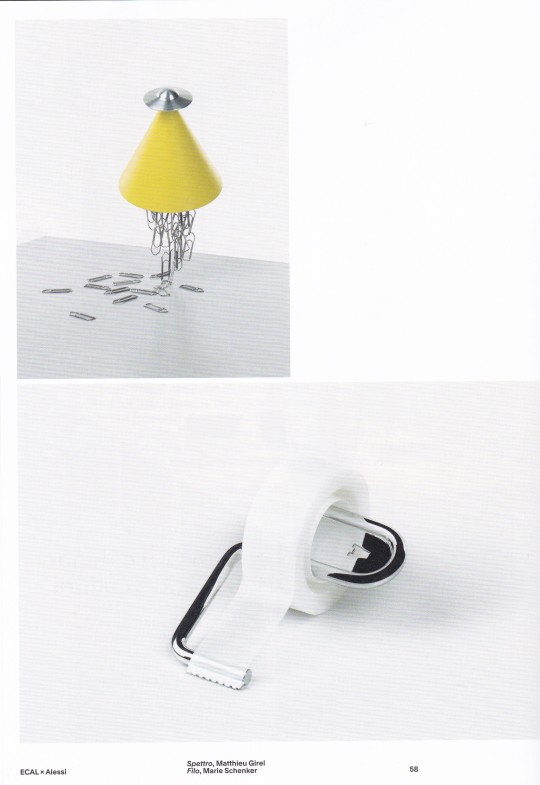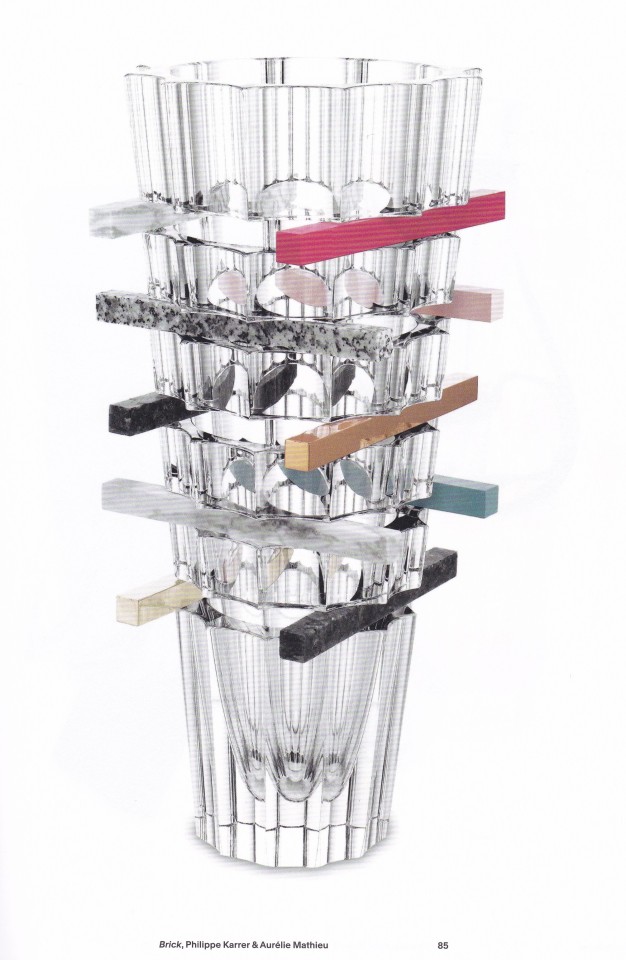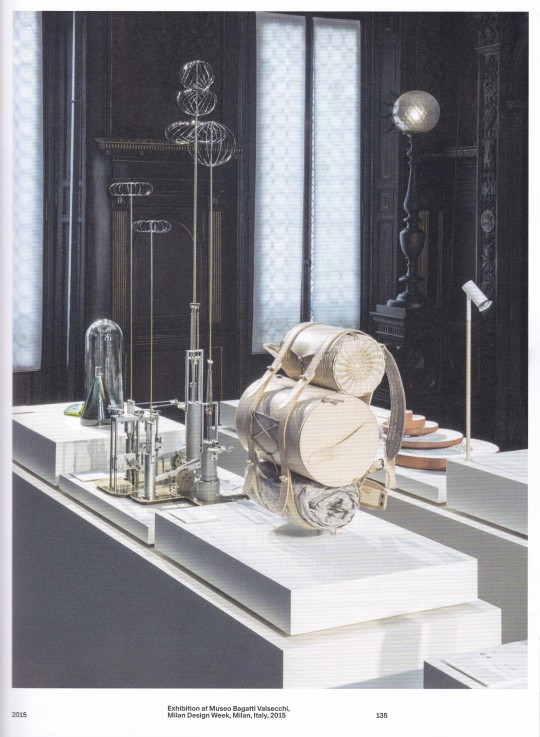#teaching methods
Note

If all the maids are boys, do you think the pronoun "her" was also a mistranslation, like with Doll? (Haven't finished the new chap yet, are the maids referred to as female regardless of gender?)
Translation issue or... possibly trans?
Since all the Collies seem to be male, it could be another questionable translation choice. In ch197, it's understood that the Collies (at least in that lesson) are male, and at least some of them have specifically been referred to as boys.
However, this kid is called Milly. Might be a feminine-sounding nickname for Maximillian or something. It could be a situation where Milly is biologically male but prefers feminine pronouns.
Honestly, if that's the case, Milly might actually have a higher aptitude for being a Collie than some of these others, like Daniel. Simply because Layla/Al has two completely different personalities. Like I said elsewhere, the orphanage isn't going to find a bunch of DID kids (or kids with two souls in one body or whatever the case is with Layla/Al), let alone for their blood types to match, which is the main determinant for their "aptitude". The orphanage gets kids with that same blood type and forces them into this gender role. Or some gender duality. Idk why none of the Collies are female. Maybe there used to be some, but they already fledged?
Then again, maybe not all of the Collies are in the same lesson at the same time? Or perhaps Finny and Snake just didn't notice that one was actually a girl? Who knows, just yet.
Yana-san is definitely enjoying bending gender roles right now. She has played with it before, like Madam Red being a doctor (rare back then), with our earl pretending to be a girl for Druitt's party, how Sebastian trains Sieglinde to be more lady-like but then she gets her hair cut short, pretty much everything about Nina Hopkins, and how Sebastian trains Baldo to do "women's work" and tells him much the same thing that Artie tells Daniel.
The way F. O. L. Orphanage trains these kids is beyond unorthodox, though. Boys learning to cook and sew is all fine and good. Forcing them to wear dresses while doing so? Not so fine and good. ETA: No one in the other classes seems to be upset about uniforms. That we know of.
And, even though Artie is referred to as a boy, I'm not entirely sure about that. 🤔 I'm half expecting to learn more about the Mastiffs and it turn out they are all forced to dress as boys, regardless of their sex and gender. Artie's hair style has got me baffled. Reminds me of Sascha's hair, which also has me questioning their sex and gender. Which is why I started using "they/them" for Sascha some time ago.
#black butler#kuroshitsuji#ch196#ch197#collie#milly#daniel#gender#gender identity#gender roles#mastiff#artie#yana toboso#orphanage#fol orphanage#unorthodox#teaching methods#sascha#princess-adrienne#asks#i answer#answered asks#feb 20 2023
32 notes
·
View notes
Text
In our department there still is an overhead projector in every lecture hall and classroom and such although probably no one uses them anymore. It's also kinda funny how many teachers still call lecture slides 'transparencies' even though they haven't been in use for ten years or so!
#okay a bit under ten years but whatever#university#student life#education#teaching methods#overhead projector#transparency#language#linguistics
1 note
·
View note
Text
Quick and Easy Lesson Planning Tips
Are you a teacher struggling to plan engaging lessons for your students? Look no further! In this video, our experienced educator and SEO expert will share their top tips for quick and easy lesson planning. Learn how to create clear learning objectives, i
Hello and welcome to my channel! If you’re a teacher looking for quick and easy lesson planning tips, you’ve come to the right place.
First, start with clear learning objectives. Knowing exactly what you want your students to learn will make it easier to create a focused lesson plan.
Next, be sure to incorporate a variety of teaching methods to keep your students engaged. Mix things up with…
View On WordPress
#clear learning objectives#easy lesson planning#educational tips#effective lesson planning#lesson planning tips#quick lesson planning#student engagement#successful lessons#teacher tips#teaching methods#time-saving tips
2 notes
·
View notes
Photo










The Ecal Manual of Style
Edited by Jonathan Olivares and Alexis Georgacopoulos
Phaidon, London 2022, 204 pages, 300 illustrations, Hardback, 27 x 20,5 cm, ISBN 9781838665173
euro 39,95
email if you want to buy [email protected]
L'università svizzera ECAL è uno degli istituti di arte e design più quotati degli ultimi vent'anni, e questo volume ne rivela per la prima volta i metodi di insegnamento, attraverso una selezione dei progetti più innovativi realizzati dagli studenti. Designer, critici e scrittori rispondono alla domanda "Come si dovrebbe insegnare il design oggi?", svelando l'approccio unico della scuola alla pedagogia del design: incoraggiare lo stile personale e stimolare gli studenti ad indirizzare la proprio creatività verso un contesto professionale. Un volume perfetto per un pubblico di designer e studenti di design
The story and teachings of one of the world’s most creative design schools, as told by its teachers, alumni, and student projects – the ideal book for educators and students alike, posing the question 'How should design be taught today?'
Swiss university ECAL is widely considered to be among the leading art and design institutions of the past two decades. Here, for the first time, ECAL’s teaching methods are revealed to a wider readership. The book poses the question ‘How should design be taught today?’ to select designers, critics, and writers, and the answers highlight the school’s unique approach to design pedagogy: encouraging individual and personal styles, and rigorously pushing them to develop into their most coherent forms. This is the only book to explain ECAL's innovative teaching methods, which encourage students to be business minded as well as creative.
18/06/22
orders to: [email protected]
ordini a: [email protected]
twitter: @fashionbooksmi
instagram: fashionbooksmilano, designbooksmilano tumblr: fashionbooksmilano, designbooksmilano
#Ecal#Manual of Style#design school#design pedagogy#teaching methods#design books#designbooksmilano#fashionbooksmilano
17 notes
·
View notes
Text
Methods, Techniques and Approaches of Teaching
Effective teaching is measured by the level of creativity a teacher employs in the classroom environment. This topic is relevant because it highlights the significant ways in which students could be motivated to benefit from the learning environment. Lee affirms that motivating students gives them the desire to perform better in every examination they take. Moreover, this topic is relevant because it helps in the understanding of students' perceptions of their teachers in the learning environment. Most students tend to be more positive and optimistic in cases where they have creative teachers who go the extra-mile to drive the point home.
The first most effective and creative way of teaching is the student-centered approach to learning. This means that the teacher will not spent all the time in class lecturing his/her notes to students. It is the most effective and creative way of teaching because it ensures that students are involved in the lesson through self-reflection, group discussions, brainstorming, and role-playing. It gives students, sitting at the back, the opportunity to pay attention to the learning process, as they have to become involved in the ongoing discussion in the classroom.
The second effective and creative method of teaching is the use of diverse teaching aids in the classroom. Technology is changing at an extremely alarming rate. For a teacher the best way to change the perception of a student is to get out of the comfort zone by embracing and utilizing technological aids in the classroom. Some of the key teaching aids teachers could use include power point, multimedia, computers, paper crushers, and student writing scripts. It enhances the memory of a student because of the improved ability to link the normal teaching elements and the visual elements used by the teacher. Class sessions entailing the use of videos, slide shows, and transparencies are always interesting and enhance the attentiveness of students apart from improving their memory. In most instances, students will look forward to classes that involve the use of visual supports. Again, this strategy is more efficient and attractive because it eliminates the idea that teachers are only supposed to use the chalkboard and the chalk to pass their message across. Teachers who want to be creative and bring changes to their classrooms must be ready to move along with the existing technology rather than using traditional approach of writing information on the chalkboard for students to follow. Overall, the use of visual supports such as videos and power points is effective because of its ability to change the attitude of students toward the learning experience.
The third strategy that exhibits effective and creative teaching is the teacher's ability to establish a connection between the classroom content and real life. It is undeniable that many students enjoy lessons if the teacher is able to give real life demonstrations. The strategy is effective and creative because it enhances the ability of students to share personal experiences with others in the learning process. In fact, the memory retains most of the ideas shared through personal experiences compared to the ones emphasizing the class content. Students find it easier to tackle their examinations with such learning activities because of the ability to remember the taught content directly and its relationship to their personal experiences.
In conclusion, teachers in the contemporary classroom must prioritize effective and creative teaching strategies because they enhance the ability of the learner to grasp the content presented. Teachers should rise above traditional teaching approaches to ensure their students perform excellently in line with effective and creative teaching techniques. For instance, they could use educational aids such as computers to drive the class content into the brains of their students. Additionally, they could try to establish a perfect link between the class content and the real world to ensure students understand all the information presented in class. Creative thinking is the only way to tap the potential of all students in the classroom.
2 notes
·
View notes
Text
My High School science/chemistry teacher was the definition of a no-nonsense teacher. Case in point: This is the method would use this method to deal with disruptive/lazy students.
At the beginning of the year (and occasionally on other days), he would say this:
-----------------------------
(HIS WORDS, NOT MINE)
Everyone listen up. Right now.
When I am teaching a lesson, there are two things you need to know.
One, I will not repeat myself. Ever. If you talk over my lesson, fall asleep, or you just aren't paying attention, tough luck. If you actually have a disorder that makes it hard for you to just sit down and listen to me without talking, falling asleep, or whatever, I will need some proof. Otherwise, I will not take any excuses.
Two, I will not help you on assignments if you talk or fall asleep during my lessons. When a student is talking over me or taking a nap during a lesson, I automatically assume that student knows everything about the lesson and therefore does not require my assistance. That's the only possible reason you could have for being so rude.
It is not hard to just sit down and listen to somebody talk. It is also not hard to produce proof that you have a medical condition. If you can't do either of those things, that's not my problem. Now, if you do have some sort of disability and you prove that you're not lying to get my sympathy, I will gladly make accommodations. Otherwise, you'd best be on your...best behavior.
In my 20+ years of teaching, I've found that I can only help a student if it is clear that they want to succeed. I've tried many times to help people who just don't care, and we both ended up worse than before I started.
So, if you want to succeed in this class, you better show it to me with the choices that you make. If you want to come out of this class smarter than before, then I will see to it that you become smarter. But if you couldn't possibly care less, that's your problem, not mine.
I am not your friend. I am your teacher. Don't forget it.
-----------------------------
Despite the fact that the subject he teaches is generally known for being incredibly tough, he had by far the highest passing rate for all of his classes compared to the other teachers. According to him, there was usually only one or two students at most who would fail his classes; most people who did were often expelled later due to bad behavior.
His tough-but-fair method to teaching was pretty ruthless, but he was always genuinely polite and helpful to those who clearly showed that they wanted to pass his classes.
The disrespectful kids who never put in any effort usually shaped up pretty quick, especially because he had four classes that you were required to pass in order to graduate. If you weren't in his good graces, you'd have a bad time, plain and simple.
This right here is the method that every teacher should use. Some might say it's unethical, but I say who cares? IT WORKS.
1 note
·
View note
Text
Empowering Tomorrows Financiers: Innovative Strategies for Teaching Personal Finance in Schools
This article discusses the importance of personal finance education in schools and explores effective teaching methods, such as hands-on activities and online platforms, to enhance students financial literacy skills.
Introduction to Personal Finance Education in Schools
Understanding the importance of teaching personal finance in schools is essential for preparing students for their financial…

View On WordPress
0 notes
Text

Discovering the importance of measurement through hands-on experiences lays the foundation for understanding the concept of weight and encourages critical thinking. By crafting their own scales, students not only enhance their fine motor skills but also develop a deeper appreciation for the significance of accurate measurements in our everyday lives.
#measurements#InnoveraSchool#modern education#lonikalbhor#education#qualityeducation#child development#teaching methods#cbse school#preschool#cbse school near me#secondary education#best private school#school near me#educational psychology
1 note
·
View note
Text
youtube
#MrFili#FavoriteTeacher#TeacherInspiration#Education#teachingmethods#InspirationalTeacher#TeachingImpact#ClassroomFun#StudentExperience#lifelessons#Mr Fili#Favorite Teacher#Teacher Inspiration#Teaching Methods#Inspirational Teacher#Classroom Fun#Student Experience#Impactful Teaching#Heartwarming Stories#Emotional Teaching#Life Lessons#Teaching Strategies#Mentorship#Teaching Excellence#Inspirational Stories#Teacher Impact#Engaging Education#Educational Influence#Student Engagement#Effective Teaching Techniques
0 notes
Text
How to Teach English with the PPP Method
By Mehrdad Sabir

Are you looking for a simple and effective way to teach English to your students? Do you want to help them learn new language points in a structured and engaging way? If so, you might want to try the PPP method.
The PPP method, which stands for Presentation, Practice, and Production, is a popular teaching approach used by many English language teachers around the world. It is based on the communicative approach to language teaching, which emphasises the importance of communication as the ultimate goal of language learning.
In this blog post, I will explain what the PPP method is, how it works, and what are its advantages and disadvantages. I will also give you some tips and examples on how to use the PPP method in your own classroom.
What is the PPP Method?
The PPP method involves three stages: presentation, practice, and production. In each stage, the teacher and the students have different roles and activities. Here is a brief overview of each stage:
Presentation: This is the stage where the teacher introduces a new language point, such as a grammar rule, a vocabulary item, or a function. The teacher uses a context that requires the use of the target language, such as a text, a dialogue, or a situation. The teacher elicits the meaning, form, and pronunciation of the language point from the students, or explains it if necessary. The teacher also checks the students’ understanding of the language point by using concept checking questions (CCQs).
Practice: This is the stage where the students practice the new language point in controlled or guided activities, such as drills, gap-fills, matching, or ordering. The aim of this stage is to help the students use the language point accurately and fluently, and to correct any errors they might make. The teacher monitors the students’ performance and gives feedback.
Production: This is the stage where the students use the new language point in freer or more creative activities, such as role-plays, discussions, or writing tasks. The aim of this stage is to help the students use the language point in a meaningful and communicative way, and to personalise it to their own needs and interests. The teacher facilitates the students’ communication and gives feedback.
How to Use the PPP Method?
The PPP method can be used to teach any language point, such as grammar, vocabulary, or functions. However, it is important to follow some guidelines and principles to make the most of this method. Here are some tips and examples on how to use the PPP method effectively:
Choose a suitable language point for your students’ level and objectives. Make sure that the language point is relevant, useful, and challenging for your students. For example, if you want to teach the present perfect tense to intermediate students, you can choose a context such as talking about life experiences or recent events.
Provide a clear and engaging context for the presentation stage. Use visual aids, such as pictures or flashcards, to help illustrate the meaning of the language point. For example, if you want to teach the present perfect tense, you can use pictures of famous people or places to elicit sentences such as “She has visited the Eiffel Tower” or “He has met Barack Obama”.
Elicit as much as possible from the students during the presentation stage. Avoid giving long explanations or translations of the language point. Instead, ask questions, such as “What tense is this?” or “What does this word mean?” to get the students to discover the language point by themselves. For example, if you want to teach the present perfect tense, you can ask questions such as “When did she visit the Eiffel Tower?” or “How do we form the present perfect tense?”
Check the students’ understanding of the language point during the presentation stage. Use concept checking questions (CCQs), such as “Is it in the past, present, or future?” or “Does it mean the same as …?” to make sure that the students understand the meaning, form, and pronunciation of the language point. For example, if you want to teach the present perfect tense, you can ask CCQs such as “Has she visited the Eiffel Tower before?” or “Do we need to say when she visited the Eiffel Tower?”
Provide a variety of practice activities for the practice stage. Use different types of activities, such as mechanical, meaningful, and communicative, to help the students practice the language point in different ways. For example, if you want to teach the present perfect tense, you can use activities such as filling in the blanks, matching sentences and pictures, or asking and answering questions.
Provide clear instructions and examples for the practice activities. Make sure that the students know what to do, how to do it, and why to do it. For example, if you want to teach the present perfect tense, you can say “Fill in the blanks with the correct form of the verb. For example, ‘She has visited the Eiffel Tower’.”
Provide feedback and correction for the practice activities. Monitor the students’ performance and give them positive and constructive feedback. Correct any errors that they might make, either immediately or later, depending on the type and purpose of the activity. For example, if you want to teach the present perfect tense, you can say “Good job, you have used the present perfect tense correctly. But remember to pronounce the ‘ed’ sound at the end of the verb.”
Provide a variety of production activities for the production stage. Use different types of activities, such as role-plays, discussions, or writing tasks, to help the students use the language point in a realistic and creative way. For example, if you want to teach the present perfect tense, you can use activities such as interviewing a famous person, talking about your bucket list, or writing a postcard.
Provide minimal guidance and intervention for the production activities. Let the students use the language point freely and naturally, without too much interference from the teacher. Encourage them to express their own ideas and opinions, and to interact with each other. For example, if you want to teach the present perfect tense, you can say “Imagine that you are a reporter and you are interviewing a famous person. Ask them questions about their life experiences using the present perfect tense.”
Provide feedback and correction for the production activities. Monitor the students’ communication and give them positive and constructive feedback. Correct any errors that they might make, either immediately or later, depending on the type and purpose of the activity. For example, if you want to teach the present perfect tense, you can say “Well done, you have used the present perfect tense very well. But be careful with the spelling of some irregular verbs, such as ‘seen’ or ‘done’.”
What are the Advantages and Disadvantages of the PPP Method?
The PPP method has some advantages and disadvantages that you should be aware of before using it in your classroom. Here are some of them:
Advantages:
It provides a systematic and structured approach to language teaching that helps the students learn new language points in a clear and effective way.
It provides a variety of learning activities that cater to different learning styles and preferences. Visual, auditory, and kinesthetic learners can all benefit from the PPP method.
It fosters a positive and engaging classroom environment that encourages student participation and interaction. It allows the students to learn in a supportive and collaborative way, which can increase their motivation and engagement.
Disadvantages:
It can be too teacher-centred, too linear, and too artificial. It can limit the students’ autonomy and creativity, and reduce the opportunities for authentic and spontaneous communication.
It can be too rigid and inflexible. It can ignore the students’ needs, interests, and feedback, and impose a predetermined sequence of activities that may not suit the students’ level, pace, or objectives.
It can be too repetitive and boring. It can make the students lose interest and enthusiasm, and feel frustrated and demotivated.
Conclusion
The PPP method is a popular and effective way to teach English to your students. It can help them learn new language points in a structured and engaging way. However, it is not the only way to teach English, and it has some limitations and drawbacks that you should consider. Therefore, you should use the PPP method wisely and flexibly, and adapt it to your students’ needs, interests, and feedback. You should also combine it with other methods and approaches, such as discovery, feedback, and personalisation, to make your lessons more learner-centred, dynamic, and authentic.
BY: Mehrdad Sabir
1 note
·
View note
Text
Declining Math Skills in Canadian Students: A PISA Study
The most recent Programme for International Student Assessment (PISA) results have shown a significant decline in Canadian children’s math abilities. This decline, measured from 2003 to 2022, shows only 12% of Canadian students reaching high proficiency levels in math, a stark contrast to higher percentages in Asian regions like Singapore and Hong Kong.
The PISA Examination
Administered…

View On WordPress
#Academic Performance#Canada Math Education#Educational Standards#Global Ranking#Math Proficiency#OECD Education#PISA 2022#Student Assessment#Teaching Methods
0 notes
Text
In the vibrant preschool in Orlando, Florida, we often stumble upon the big question, “How can we foster creativity in young minds while sticking to a structured curriculum?” We’ve all faced this concern as educators, but there’s hope! Melding creativity into curriculum is an art; it doesn’t happen in a vacuum. It’s a guided process that balances foundational education and imaginative thinking.
0 notes
Text
Tips for Effective Patient Education for Nurses
As nurses, we want to provide the best possible care for our patients. A key part of that care is ensuring our patients understand their conditions, treatments, and how to care for themselves. Effective patient education requires more than just handing a patient an informational pamphlet; it’s about ensuring the patient understands and feels empowered. Here are some tips to keep in mind when…

View On WordPress
#discharge planning#health literacy#involving family#new nurse#Nurse#Nursing#nursing education#nursing student#patient education#patient teaching#teaching methods
1 note
·
View note
Text
A day at IUCAA: Where the mysteries of space meet the magic of human curiosity.
For more details about admission open please visit us at :-
#cbse school#secondary education#education#stem education#hadapsar#lonikalbhor#pune#qualityeducation#cbse school near me#teaching methods#cbseschoolinhadapsar
0 notes
Text
The Best School Practices And Teaching Methods For Creating Successful Modern School

It can be challenging for leaders and people involved in teaching jobs who want to invest in an initiative to transform their educational institutions to find a clear route ahead given the discussions that seem to never cease about innovation and change. More than only financial investments in tangible assets are needed to create a modern learning environment. Despite the fact that the idea of the modern educational setting is still in its infancy, best practices—which include a dedication to student-centered instruction and continuing education for teachers—are already establishing a consensus. Students in contemporary classrooms are prepared for a future of shifting opportunities and advances in technology.
Creating a modern school
It will take a broad effort to develop an innovative system for modernizing education that will meet the needs of learners in the twenty-first century. A "modern school" is one designed for students who are navigating the 4th Industrial Revolution and the present evolving educational landscape. The cornerstone of constructing modern educational institutions will be founded not just on innovative technology or future construction, but also on establishing advanced learning environments. The focus will be on reexamining the tenets of what constitutes schooling, instruction, and learning. Those in educational leaders and management will be engaged in a continuous process of designing innovative schools. It will take decades to reimagine an educational system that was established just over a century ago.
Best practices in education for creating successful modern schools -
Modern educational institutions think that the best catalyst for change is innovation within the classroom.
Although it may be alluring for schools to rely on professionals who support evidence-based best practices, contemporary schools are becoming more aware of the drawbacks of doing so. In order to decide where their time and energy should be spent most effectively, modern schools must take into account their particular circumstances, the demands of their student cohort, their exposure to new technologies, as well as the makeup of their workforce. A crucial first step to fostering long-lasting change is working with academics to create a longer-term school-based research effort.
Selecting an educational approach carefully
Many various approaches to education are being applied in order to create environments where children will want to acquire knowledge and may succeed. Examples include basic learning, interdisciplinarity, and inquiry-based learning. These models all want to replace the ones already in use, as do the numerous fresh models that will appear in the future. Some items are only trendy and will become obsolete in a couple of years. Others either won't go away for long or will be integrated into more sophisticated models. Choosing which model of education to apply when developing a new educational system will be challenging.
Modern educational institutions must adopt new pedagogies with a change in practice
Modern leaders must be able to describe the scope of the influence that innovation will have after deciding to undertake school-led transformation and clearly communicate their views on how students learn. Schools must recognize that their current ideas of learning may not be sufficient in the age of modern leadership. To explain how their pupils learn in a technologically advanced environment and how their teachers currently instruct in that environment, they will probably need new vocabulary and pedagogical models.
Transformation occurs with a clear understanding of the digitally rich world
Transformation won't take place until we have a comprehensive knowledge of how contemporary learners study in the technologically advanced society they inhabit. We can create new pedagogies to investigate deeper, more pertinent learning inside schools if we have a better knowledge about what is learned in this informal setting. In our classrooms today, we have a tendency to look backward at our current practices and look for methods to add technology use on top of them. Even in a world where technology is pervasive, the outcomes are often disappointing and merely additive rather than transformative.
Modern campus and classroom architecture
Without a doubt, schools today won't look anything like the ones we visited just a few decades ago. Numerous options must be taken into account when remodeling the classroom, including the seating layout, collaborative areas, and show-casting areas. The entire school might also benefit from using this on a larger scale. The best school architecture firms will help schools think through how to design spaces that will best serve the requirements of learners, teachers, and administrators.
Integrating Skills for the future to continuously hone and enhance their methods
While it may be tempting to execute large-scale change or copy teaching and learning strategies from other institutions and other outside sources, these initiatives too frequently fall short of expectations, and nothing is learned as a result. Trials and pilots both have a chance of failing. Modern teachers are more inclined to approach change gradually, which increases the likelihood that the change will be successful. Small, iterative steps are taken throughout implementation, allowing for continuous impact evaluation and practice improvement.
Qualitative improvement serves as a barometer for transformation
Instead of just focusing on what their pupils have learned, modern schools measure change as a function of the change in how kids learn. It involves gathering proof of this change from their students' work and qualitatively evaluating their advancement. This entails documenting how their students' learning has changed as well as how they work on challenging projects, collaborate to build knowledge, and make wiser choices regarding their education. The learning environment will also change as a result of this, including the roles and duties of the teachers and students, the actual educational spaces, and of obviously, the technologies used.
0 notes